Today marks the anniversary of Patrick Kavanagh’s passing on 30 November 1967 and offers a moment to revisit the spare, uncompromising poems that made him one of Ireland’s most influential twentieth-century writers. Best known for the long poem The Great Hunger and the semi-autobiographical novel Tarry Flynn, he transformed ordinary parish life into powerful, enduring verse.
Patrick Kavanagh turned the ordinary sights and sounds of County Monaghan into poems that still resonate across Ireland and beyond. This short piece revisits the places and memories that nourished his work and honours his lasting influence.
Patrick Kavanagh is a poet and novelist who has also found time to broadcast on both Radio Eireann and the BBC. As Benedict Kiely points out in Modern Irish Fiction, when Kavanagh “either in prose or in verse turns to the poetry of white wet stones or tall green nettles or dry earth on a July headline, he never fails to be a fine writer.”
- The Mill o’Louth
- Smell Bacon
- The Stone Trough
I touch these three keys, and my native district comes alive in my imagination immediately.
The first and third are the names of well-known landmarks. But who would guess that the middle one is a man’s nickname? How hopeless are the nicknames that one finds in fiction?
“Smell Bacon” is a real ballad nickname, flat and surprising like the name in American folk songs. They are never “poetical”, which means they are poetry.
The Mill o’Louth, which stands off the road from Carrickmacross to Dundalk, occupies a great place in local lore. It is associated with the Prophecies of St. Columcille. Something apocalyptical, its wheel was to be driven round with human blood when the Great (never clearly defined) Battle took place. Things of the imagination pass into a penumbra in this way.
Many’s the time I hear the story from poor oul’ Pether the Bodagh. Those were wonderful stories for a child’s imagination. The Stone Trough was - and still is, needless to say - exactly halfway between my native village of Innishkeen and Dundalk. It was an essential landmark in the not-so-long-ago days of the horse-drawn vehicle. Going to Dundalk in a cart was a big adventure. The world was an enormous place; it took a good-stepping horse two and a half hours to make the journey. We had three ways to get to Dundalk, and there was a dispute over which was the shortest.
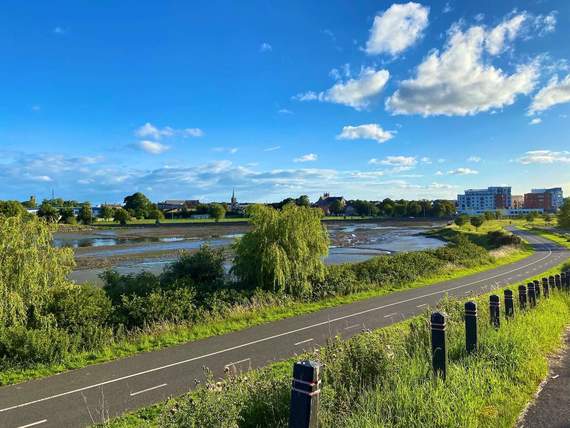
The road to Dundalk.
We could go by Ballykelly, or by the Chanonrock Road, or the Low Road by Hackballscross. The first two roads brought us past Smell Bacon’s Shop. I remembered the nickname “Smell Bacon”, or, instead, I had my memory awakened to it by a barman in Mooney’s in Fleet Street, London, not long ago. This barman was from that same district, and if he had presented with a complete film of our mutually native fields, he could not have brought the place more vividly before me than by this nickname.
As he uttered the magic incantation, it was a summer Sunday, and I was leaning over the handlebars of my bicycle beside Smell’s shop at Channonrock, talking to or at least listening to a group of young fellows who were tossing ha’pence. And I remember the Sunday years earlier when we all went up to play football in a meadow belonging to the same Smell. One fellow was togged out in a pair of leggings, and one of our team gave him a kick in the back of the leg, busting the seam. How evocative a nickname can be! Although the excitement of this district for me is mostly subjective and emotional, it also has some more obvious claims on our attention.
Very little has been written about it in recent years. Yet, Farney, in south Monaghan, is one of the few places in Ireland with indigenous literature, as anyone can see from reading Gaelic stories collected by the late Henry Morris. There were poets in this area, and though they were not great poets, they absorbed the little fields and lands and became authentic through them. For that is the way the poet’s mind works.
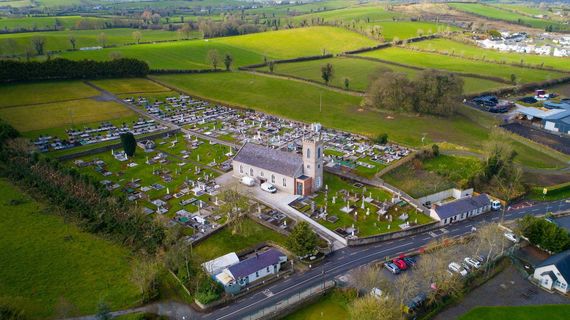
The Patrick Kavanagh Center in Monaghan.
No poet ever traveled in search of beauty. No poet ever looked at a scene and cried, “Wonderful.” Memorable beauty comes at us obliquely as we go about our troubled business.
W.H. Davis wrote: “What is this life if full of care, We have no time to stand and stare?”
But Davis was wrong -
“What is this life if not full of care
We do not let the cart-tracks stare
Into our hearts with love’s despair?”
This pursuit of beauty is one of the defects of the tourist’s perspective. The tourist is in a hurry; he demands a quick return of the picturesque and the obvious. But for all that, it is possible even when we pursue beauty or happiness to come upon oblique references to it. The job is to recognize them quickly. Not everybody can have the fields and lanes stare at him as they stare at a man driving a cow to a fair.
Farney has other claims to fame.
I once heard Joseph Hone, biographer of Yeats and many other famous men, say that the view from the top of Maracloone Hill, southeast of Carrickmacross, was the most exciting view he had ever encountered. But I wasn’t thinking of that - Farney has had its history written. The author was Philip Shirley, ancestor of the racehorse breeder of Lough Fea, Carrickmacross. The history of Farney is a subsidiary of Shirley’s larger History of Monaghan, which is considered one of the great, if not the greatest, local histories ever written. But Shirley’s Farney is an even greater history, for it is the intimate history of fields and lanes and the private lives of rocks. It has the same excellent validity we find in local newspapers. It is also a history of Ireland in microcosm. This Shirley, a landlord, was undoubtedly a remarkable man, and, notwithstanding Sir Shane Leslie’s efforts, he deserves to be more seriously considered. He was intelligent enough, when working on his histories, to secure the services of the great O’Donovan to look after the Gaelic scholarship side.
Shirley, who lived just over a century ago, rescued a valuable part of the native heritage from oblivion and deserves our profound affection. He tells stories of the McMahons, the chiefs of Farney, and of other things. The McMahons of Farney are not as well-known as the O’Neills or O’Donnells, but for me, as their deeds filtered through my boyhood imagination, they loom large and mysterious. McMahon and his sixteen sons once rode into the town of Louth on sixteen white horses. They had a residence - or so the story went - up the land upon which I lived - and I often searched among the rocks hoping I might find some memory of their lives.
The tomb of the McMahons is in the village of Inniskeen beside - incidentally - a round tower, and there remained in the legends of their lives something not merely noble but mystical. There were cures for diseases attached to their relics.
And once again, it is a summer Sunday afternoon in my imagination, and I am on my bicycle passing over the Fane Bridge. The Fane River, which runs through this village, is considered one of the best trout streams in Ireland, though the only fishing I ever did there was for salmon poaching. One of my most memorable bicycle tours used to be by the Low Road via Hackballscross or Annavackey. Ahead of me lie the fields of South Armagh with Slieve Gillian in the hollow. To my right is Dundalk, and it is that way I go down a tree-lined road to Killcurry and Faughart and up through Ravensdale.
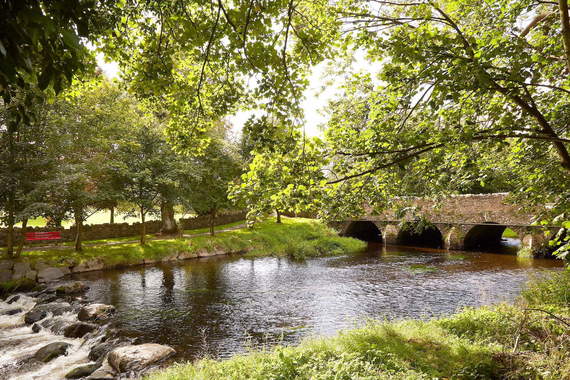
Fane River, County Monaghan.
Ravensdale, north of Dundalk, is at least as delightful in the usual picturesque sense as south Dublin and Wicklow. A limestone country full of history. One of the pillars of the Gap of the North, looking over Cooley and the magic setting of the Tain.
I cycle home through the Plain of Muirthemne, past Smell Bacon’s again, down by Ballykelly and an undulating narrow road from the Bohar Bhee - the Yellow Road.
Over there on the edge of the Red Bog lived the Bard of Callenberg. The Bard was a great character, though he did me no good when it was first discovered I was addicted to versing. Everyone thought that I would turn out like The Bard - a rapscallion, a scandalmonger making rhymes about the neighbors. Remember the rhyme he made on our local grocer.
The walkin was ringing
And off I went singing
For in Inniskeen I’m well pleased for to be,
But in less than an hour
Male, pollard and flour
Was whipped of me cart by consaitey Magee.
The Bard hasn’t the money to pay for the stuff.
* This article was originally published in 2022 and updated in Nov 2025.
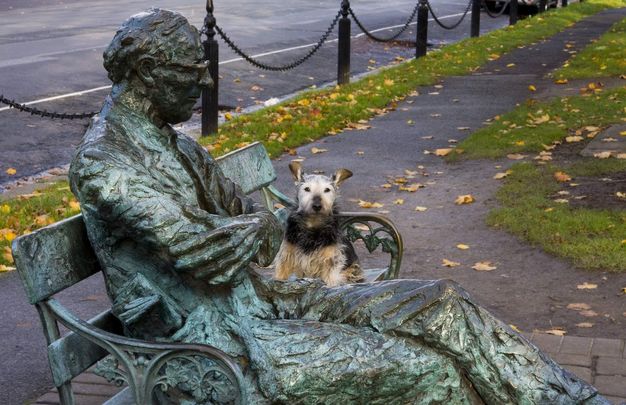
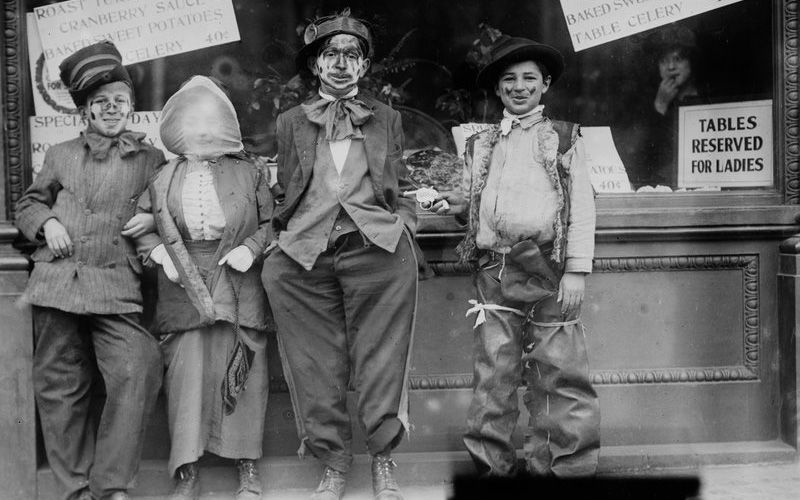

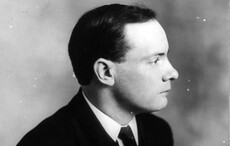
Comments